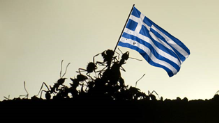| Publication Type: | Journal Article |
| Year of Publication: | 2014 |
| Authors: | P. S. Ward, Brady, S. G., Fisher, B. L., Schultz, T. R. |
| Journal: | Systematic Entomology |
| Volume: | 40 |
| Issue: | 1 |
| Pagination: | 61-81 |
| Abstract: | This study investigates the evolutionary history of a hyperdiverse clade, the ant subfamily Myrmicinae (Hymenoptera: Formicidae), based on analyses of a data matrix comprising 251 species and 11 nuclear gene fragments. Under both maximum likelihood and Bayesian methods of inference, we recover a robust phylogeny that reveals six major clades of Myrmicinae, here treated as newly defined tribes and occurring as a pectinate series: Myrmicini, Pogonomyrmecini trib.n., Stenammini, Solenopsidini, Attini and Crematogastrini. Because we condense the former 25 myrmicine tribes into a new six-tribe scheme, membership in some tribes is now notably different, especially regarding Attini. We demonstrate that the monotypic genus Ankylomyrma is neither in the Myrmicinae nor even a member of the more inclusive formicoid clade—rather it is a poneroid ant, sister to the genus Tatuidris (Agroecomyrmecinae). Several species-rich myrmicine genera are shown to be nonmonophyletic, including Pogonomyrmex, Aphaenogaster, Messor, Monomorium, Pheidole, Temnothorax and Tetramorium. We propose a number of generic synonymies to partially alleviate these problems (senior synonym listed first): Pheidole = Anisopheidole syn.n. = Machomyrma syn.n.; Temnothorax = Chalepoxenus syn.n. = Myrmoxenus syn.n. = Protomognathus syn.n.; Tetramorium = Rhoptromyrmex syn.n. = Anergates syn.n. = Teleutomyrmex syn.n. The genus Veromessor stat.r. is resurrected for the New World species previously placed in Messor; Syllophopsis stat.r. is resurrected from synonymy under Monomorium to contain the species in the hildebrandti group; Trichomyrmex stat.r. is resurrected from synonymy under Monomorium to contain the species in the scabriceps- and destructor-groups; and the monotypic genus Epelysidris stat.r. is reinstated for Monomorium brocha. Bayesian divergence dating indicates that the crown group Myrmicinae originated about 98.6 Ma (95% highest probability density 87.9–109.6 Ma) but the six major clades are considerably younger, with age estimates ranging from 52.3 to 71.1 Ma. Although these and other suprageneric taxa arose mostly in the middle Eocene or earlier, a number of prominent, species-rich genera, such as Pheidole, Cephalotes, Strumigenys, Crematogaster and Tetramorium, have estimated crown group origins in the late Eocene or Oligocene. Most myrmicine species diversity resides in the two sister clades, Attini and Crematogastrini, which are estimated to have originated and diversified extensively in the Neotropics and Paleotropics, respectively. The newly circumscribed Myrmicini is Holarctic in distribution, and ancestral range estimation suggests a Nearctic origin. The Pogonomyrmecini and Solenopsidini are reconstructed as being Neotropical in origin, but they have subsequently colonized the Nearctic region (Pogonomyrmecini) and many parts of the Old World as well as the Nearctic region (Solenopsidini), respectively. The Stenammini have flourished primarily in the northern hemisphere, and are most likely of Nearctic origin, but selected lineages have dispersed to the northern Neotropics and the Paleotropics. Thus the evolutionary history of the Myrmicinae has played out on a global stage over the last 100 Ma, with no single region being the principal generator of species diversity. |
